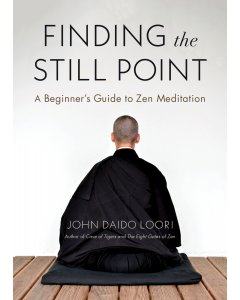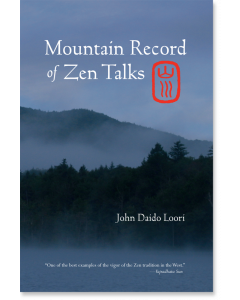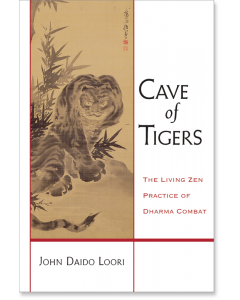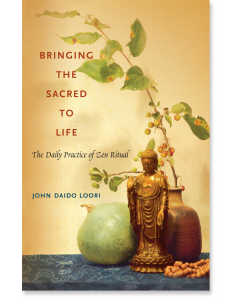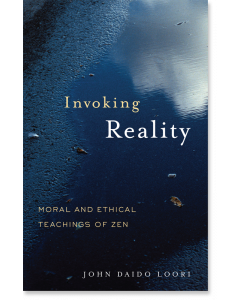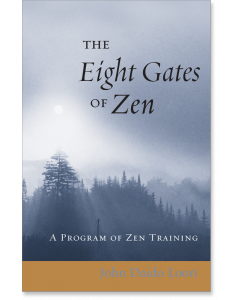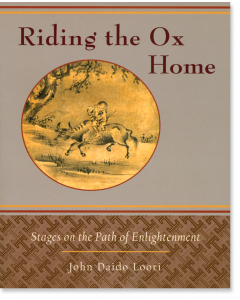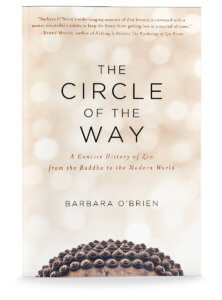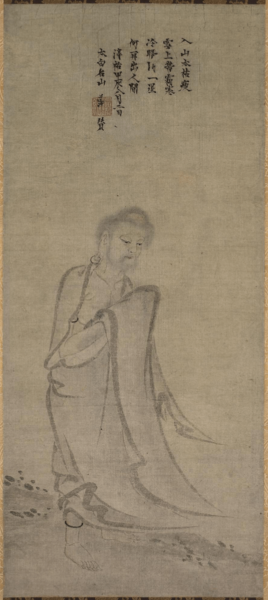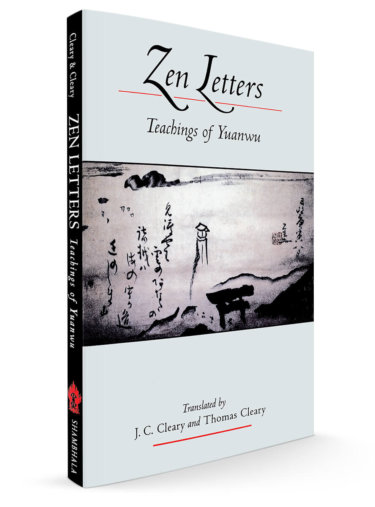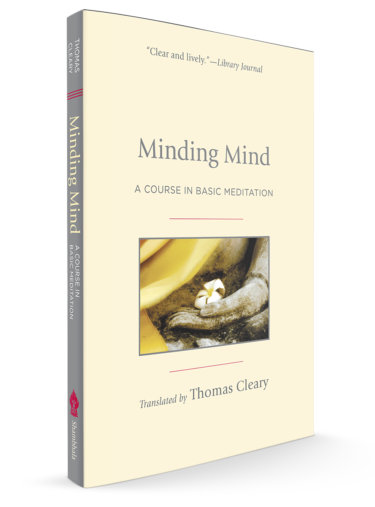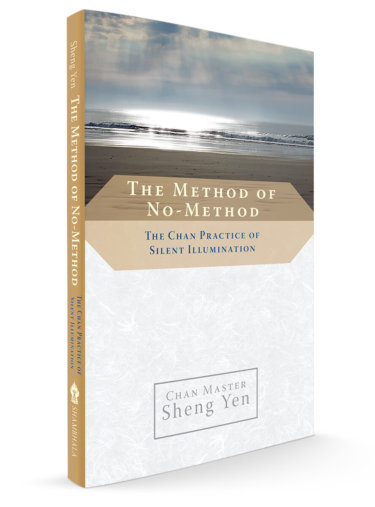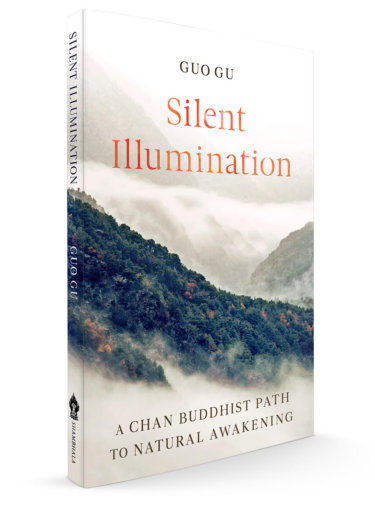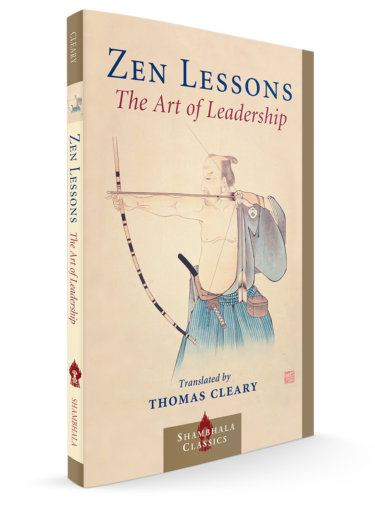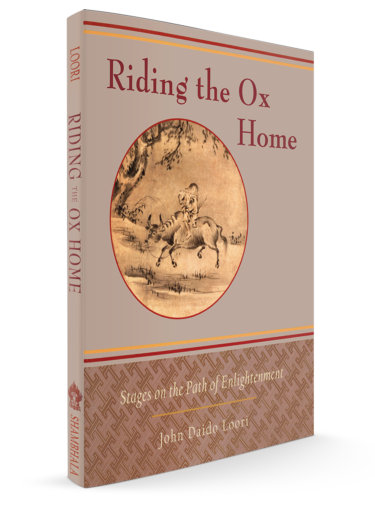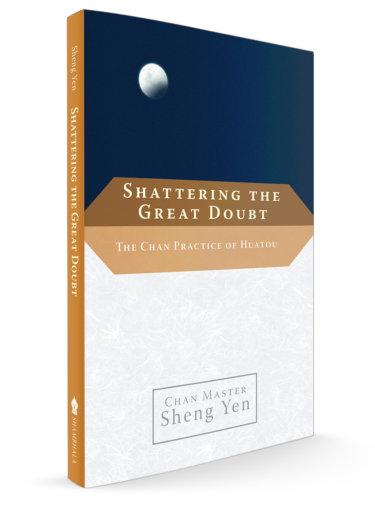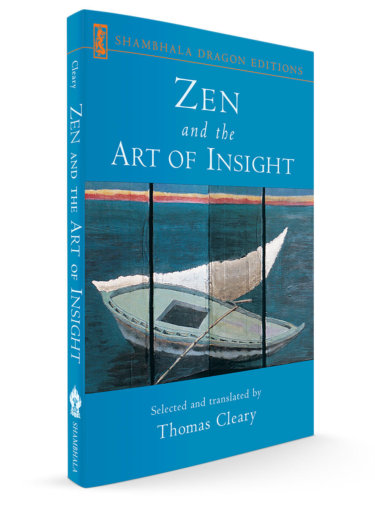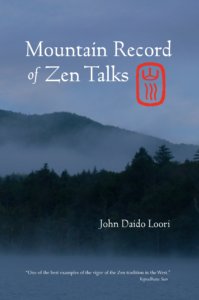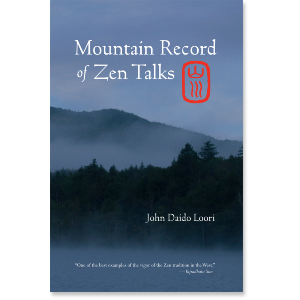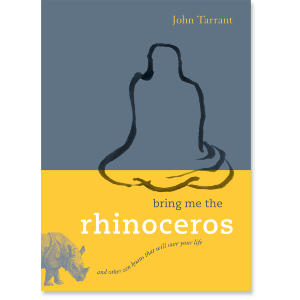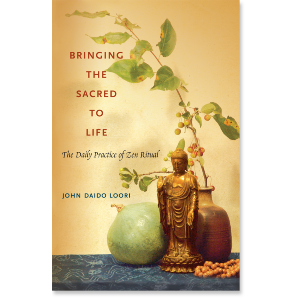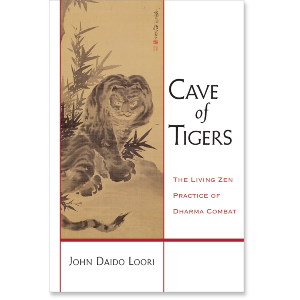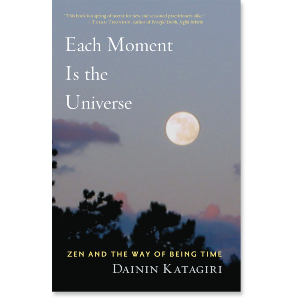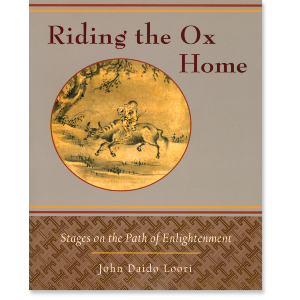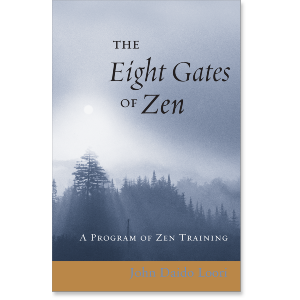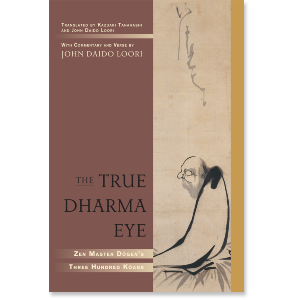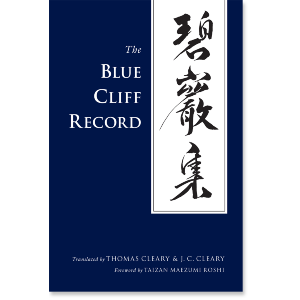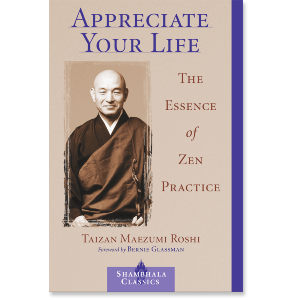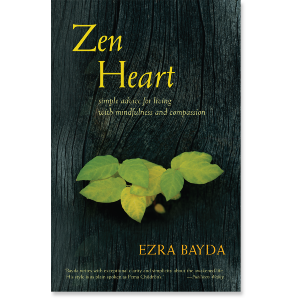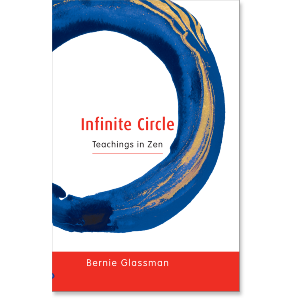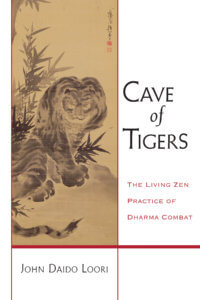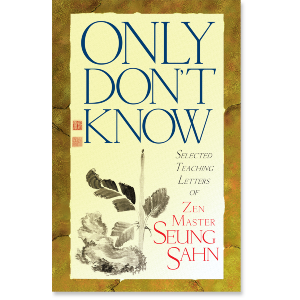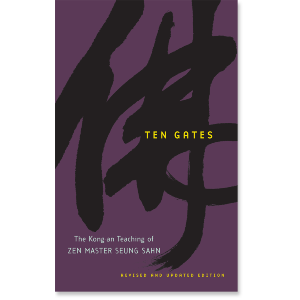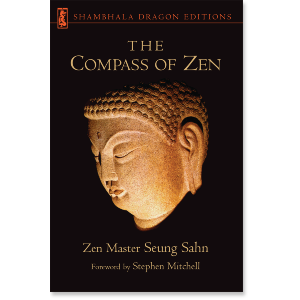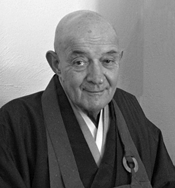

John Daido Loori
John Daido Loori (1931–2009) was one of the West's leading Zen masters. He was the founder and spiritual leader of the Mountains and Rivers Order and abbot of Zen Mountain Monastery. His work has been most noted for its unique adaptation of traditional Asian Buddhism into an American context, particularly with regard to the arts, the environment, social action, and the use of modern media as a vehicle of spiritual training and social change. Loori was an award-winning photographer and videographer. His art and wildlife photography formed the core of a unique teaching program that integrated art and wilderness training by cultivating a deep appreciation of the relationship of Zen to our natural environment. He was a dharma heir of the influential Japanese Zen master Taizan Maezumi Roshi and he authored many books.
John Daido Loori
John Daido Loori (1931–2009) was one of the West's leading Zen masters. He was the founder and spiritual leader of the Mountains and Rivers Order and abbot of Zen Mountain Monastery. His work has been most noted for its unique adaptation of traditional Asian Buddhism into an American context, particularly with regard to the arts, the environment, social action, and the use of modern media as a vehicle of spiritual training and social change. Loori was an award-winning photographer and videographer. His art and wildlife photography formed the core of a unique teaching program that integrated art and wilderness training by cultivating a deep appreciation of the relationship of Zen to our natural environment. He was a dharma heir of the influential Japanese Zen master Taizan Maezumi Roshi and he authored many books.
-
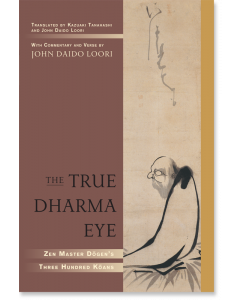 The True Dharma Eye$39.95- Paperback
The True Dharma Eye$39.95- PaperbackTranslated by John Daido Loori
Translated by Kazuaki Tanahashi
By Zen Master Dogen
GUIDES
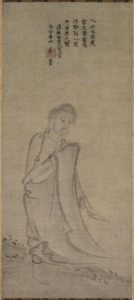
The Works of Zen in the Song Dynasty

This is part of a series of articles on the arc of Zen thought, practice, and history, as presented in The Circle of the Way: A Concise History of Zen from the Buddha to the Modern World. You can start at the beginning of this series or simply explore from here.
Shakyamuni Emerging from the Mountains
China, Zen in the Song dynasty
Image from the Cleveland Museum of Art
Explore Zen Buddhism: A Reader's Guide to the Great Works
Overview
Chan in China
> The Works of Zen in the Song Dynasty (960 - 1279)
Zen in Korea
Zen in Japan
- Early Zen in Japan
- Dogen: A Guide to His Works
- Rinzai Zen
- Hakuin Ekaku: A Reader's Guide
- The Samurai and Zen
- Zen in Japan up to the Meiji Restoration
Additional Resources
- The Heart Sutra: A Reader’s Guide
- Zen in the Modern World (Coming Soon)
- Foundational Sutras and Texts of Zen (Coming Soon)
- Zen and Tea
The great translator Thomas Cleary contrasts the Zen works in the Song dynasties from its predecessor, the Tang, in his Classics of Buddhism and Zen, Volume 1,
If the Tang dynasty, from the early seventh through the ninth centuries, may be called the classical period of Chinese Zen, the Song dynasty may be called its baroque period, characterized by complexity of form and ingenious imagery with multiple meaning. In contrast to the relatively plain and straightforward Zen literature of the Tang dynasty, Song dynasty Zen literature is convoluted and artful. This is not regarded, in Zen terms, as a development in Zen, but as a response to a more complex and pressured society and individual. The Zen adepts of Song times did not regard the reality of Zen as any different in its essence from that of classical times, but considered the function of Zen to have become complicated by the complexity of the contemporary mind and the rampant spread of artificial Zen based on imitations of a few Zen practices.
The Song Dynasty saw the great koan collections we know today formalized and these are so important and extensive that rather than including them here, they are the subject of the next article: The Great Koan Collections.
Below are some of the works we publish that relate to this time period.
Zen Letters: Teachings of Yuanwu
By Yuanwu
Translated by J. C. Cleary and Thomas Cleary
This book collects the letters of the primary author of the Blue Cliff Record, Yuanwu (1063–1135).
Zen Letters presents the teachings of this great Chinese master highlighted in The Circle of the Way as the author of the annotations and commentary in the Blue Cliff Record. In this book, his letters transmit direct, person-to-person lessons, intimately revealing the inner workings of the psychology of enlightenment. These teachings are drawn from letters written by Yuanwu to various fellow teachers, disciples, and lay students—to women as well as men, to people with families and worldly careers as well as monks and nuns, to advanced adepts as well as beginning students. His letters, here in English for the first time, are among the great treasures of Zen literature.
This is also included in Classics of Buddhism and Zen, Volume II.
Minding Mind: A Course in Basic Meditation
Translated by Thomas Cleary
Two of the seven meditation manuals in this work are from the Song Dynasty.
Models for Sitting Meditation was composed by Chan Buddhist Master Cijiao of Changlu in late eleventh-century China. Little is known of Cijiao, except that he was not only a master of the powerful Linji school of Chan Buddhism but also a patriarch of popular Pure Land Buddhism.
The second, Guidelines for Sitting Meditation, was written by Foxin Bencai, a younger contemporary of Cijiao. The instructions of Foxin and Cijiao, both quite brief, address problems of deterioration in the quality of meditation practices and prescribe simple remedies to counteract confusion and misalignment in order to foster the proper state of mind.
Silent Illumination
Hongzhi Zhengjue (1091–1157) taught a form of meditation called mozhao chan, or “silent illumination chan.” As O'Brien writes in The Circle of the Way,
Early Buddhism identified two kinds of meditation, called in Sanskrit shamatha (“dwelling in peace”) and vipashyana (“clear seeing”). Shamatha techniques are about pacifying the mind and cultivating serenity, while vipashyana is about fostering insight. Hongzhi said that silent illumination represents a balance between the two. In his “Guidepost of Silent Illumination” he wrote that “if illumination neglects serenity aggressiveness appears,” and “if serenity neglects illumination, murkiness leads to wasted dharma.” Mozhao chan, then, is about entering a serene illumination.
We have two books on this system of practice.
The Method of No-Method: The Chan Practice of Silent Illumination
By Chan Master Sheng Yen
Here Master Sheng Yen explains that Silent Illumination begins with nothing more than putting aside all thoughts except the awareness of oneself “just sitting.” It’s so simple in execution that it has sometimes been called the “method of no-method”—yet simple as it is, the practice is subtle and profound, with the potential for ever subtler refinements as the practitioner moves toward mastery of it. When fully penetrated, this radical form of emptying one’s busy mind-stream leads to perception of the vast ocean of pure awareness.
Silent Illumination: A Chan Buddhist Path to Natural Awakening
By Guo Gu
Our natural awakening—or buddha-nature—is inherent within all of us and waiting to be realized. Buddha-nature has the qualities of both silence and illumination, and by working with silent illumination meditation you can find your own awakening. Distinguished Chan Buddhist teacher Guo Gu introduces you to the significance and methods of this practice through in-depth explanations and guided instructions. To help establish a foundation for realizing silent illumination, he has translated twenty-five teachings from the influential master Hongzhi Zhengjue into English, accompanied by his personal commentary. This book will be an indispensable resource for meditators interested in beginning or deepening their silent illumination practice.
Zen Lessons: The Art of Leadership
Translated by Thomas Cleary
The author of this work, Dahui Zonggao (1089–1163) had a different take on Silent Illumination which is described in The Circle of the Way and is also covered by Guo Gu in this video.
This guide to enlightened conduct for people in positions of authority is based on the teachings of several great Chinese Zen masters. Drawing on private records, letters, and long-lost documents of the Song dynasty (tenth to thirteenth centuries), Zen Lessons consists of short excerpts written in language that is accessible to the reader without any background in Eastern philosophy. This book serves as a guide to recognizing the qualities of a genuine Zen teacher; it also serves as a study of the character and conduct necessary for the mastery of any position of power and authority—whether religious, social, political, or organizational.
In the original Chinese, Zen Lessons is entitled Chanlin baoxun, or Chanmen baoxun, ‘‘Precious Lessons from the Chan (Zen) Schools.’’ It was originally compiled in the early twelfth century by two outstanding Chinese Zen masters, Miaoxi (better known as Dahui) and Zhu-an. In the late twelfth century it was further expanded by a Zen master named Jingshan, into the form in which the text exists today. Several commentaries on the text were written in China over the next five hundred years. It was first published in Japan in 1279, about one hundred years after its recompilation. Zen Lessons draws on the personal teachings of great Zen masters of the early Song dynasty, many from unusual sources, difficult to obtain or no longer extant, often originally available only through direct contact with the network of Chinese Zen schools. Some selections are not attributed to any written source and may have been written by one or another of the compilers, based on material derived from current oral tradition. Affording rare glimpses of the personalities of distinguished masters, Zen Lessons preserves a large body of special Zen lore that would otherwise have been lost to posterity.
Riding the Ox Home: Stages on the Path of Enlightenment
In The Circle of the Way, the author describes the famous Oxherding pictures:
Today’s visitors to Zen centers and temples might notice a series of ten drawings involving an ox and a boy displayed somewhere. It was sometime in the twelfth century that a teacher of the Linji house, Kuoan Shiyuan (dates unknown) drew a series of ten pictures with accompanying verses called the Shiniu tu, or “ox-herding pictures.” Through a story of a boy and an ox, the ten pictures depict the path to enlightenment. There are other series of ox-herding pictures, but Kuoan is credited with first creating the sequence and verses most Western Zen students will recognize today.
To explain these metaphorical aids, Zen teacher John Daido Loori wrote Riding the Ox Home: Stages on the Path of Enlightenment.
The ten Ox-Herding Pictures, the accompanying ancient poems, and a modern commentary by Daido Loori, sketch the spiritual path encountered in Zen training, a path of exhaustive study of the self and the realization of the ultimate nature of reality. The Ox-Herding Pictures can be our companion on the Way of self-discovery, our compass and perspective when we need one. They are a bottomless source of mysterious wisdom to which we can return again and again for inspiration, and they translate easily into the gritty reality of spiritual practice that emerges from and grounds us in the inescapable relevance of our daily lives.
The exquisite versions of the pictures found in the book are traditional Chinese nanga brush paintings by Gyokusei Jikihara Sensei, a modern Japanese master of calligraphy and a teacher in the Obaku School of Zen. The traditional verses accompanying them have been translated by John Daido Loori and Kazuaki Tanahashi.
Shattering the Great Doubt: The Chan Practice of Huatou
By Chan Master Sheng Yen
Huatou is a skillful method for breaking through the prison of mental habits into the spacious mind of enlightenment. The huatou is a confounding question much like a Zen koan. Typical ones are "What is wu [nothingness]?" or "What was my original face before birth-and-death?" But a huatou is unlike a koan in that the aim is not to come up with an answer. The practice is simple: ask yourself your huatou relentlessly, in meditation as well as in every other activity. Don't give up on it; don't try to think your way to an answer. Resolve to live with the sensation of doubt that arises, and it will pervade your entire existence with a sense of profound wonder, ultimately leading to the shattering of the sense of an independent self.
Master Sheng Yen brings the traditional practice to life in this practical guide based on talks he gave during a series of huatou retreats. He teaches the method in detail, giving advice for dealing with the typical pitfalls and problems that arise, and answering retreat participants' questions as they experience the practice themselves. He then offers commentary on four classic huatou texts, grounding his instructions in the teaching of the great Chan masters.
Translated by Thomas Cleary
The Prajnaparamita ("perfection of wisdom") sutras are one of the great legacies of Mahayana Buddhism, giving eloquent expression to some of that school's central concerns: the perception of shunyata, the essential emptiness of all phenomena; and the ideal of the bodhisattva, one who postpones his or her own enlightenment in order to work for the salvation of all beings.
The Prajnaparamita literature consists of a number of texts composed in Buddhist India between 100 BCE and 100 CE. Originally written in Sanskrit, but surviving today mostly in their Chinese versions, the texts are concerned with the experience of profound insight that cannot be conveyed by concepts or in intellectual terms. The material remains important today in Mahayana Buddhism and Zen.
This work includes two Song Dynasty contributions:
Key selections from the Prajnaparamita literature are presented here, along with Thomas Cleary's illuminating commentary, as a means of demonstrating the intrinsic limitations of discursive thought, and of pointing to the profound wisdom that lies beyond it.
This work includes two important works that were translated or written during the Song and appear with Thomas Cleary's commentary.
- The Scripture on Perfect Insight Awakening to Essence, translated into Chinese by Weijing of the Song dynasty (960–1279). Either a retranslation of the original or a reworking of an older translation, this text contains some useful nonstandard terminology and adroitly connects the Prajnaparamita and Yogachara teachings of Buddhism
- Key Teachings of the Great Scripture on Perfect Insight is a systematic reduction of Xuanzang’s gigantic six-hundred-scroll Chinese translation of the scripture, made by Dayin of the Song dynasty.
Continue to the next article in the Series: The Great Koan Collections >
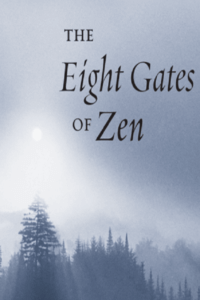
Hidden Treasure - Mountain Record of Zen Talks
By John Daido Loori
This book, now more than a quarter-century old, is one of the best ways to get acquainted with the late esteemed Zen master John Daido Loori (1931-2009). He was a lineage holder in both Soto (a dharma heir of Taizan Maezumi) and Rinzai schools, and he was founder and abbot of Zen Mountain Monastery in the Catskill Mountainsof New York State. This early collection of his dharma talks shows how accessible and direct his teaching was.
For more information:

John Daido Loori (1931–2009) was one of the West's leading Zen masters. He was the founder and spiritual leader of the Mountains and Rivers Order and abbot of Zen Mountain Monastery. His work has been most noted for its unique adaptation of traditional Asian Buddhism into an American context, particularly with regard to the arts, the environment, social action, and the use of modern media as a vehicle of spiritual training and social change.
Related Books

Hidden Treasure - The Eight Gates of Zen
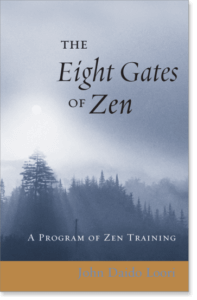
The Eight Gates of Zen: A Program of Zen Training
If you want to practice Zen but there's no zendo for miles around, this book may be the next best thing. It contains the complete, eight-phase program of training taught at Zen Mountain Monastery, Mt. Tremper, New York.
It's a training that's not in any way limited to sitting meditation (that's only part one). It also includes training in teacher interaction, study, ritual, ethics, art, body practices, and work. It's a whole-life process...
For more information:

John Daido Loori (1931–2009) was one of the West's leading Zen masters. He was the founder and spiritual leader of the Mountains and Rivers Order and abbot of Zen Mountain Monastery. His work has been most noted for its unique adaptation of traditional Asian Buddhism into an American context, particularly with regard to the arts, the environment, social action, and the use of modern media as a vehicle of spiritual training and social change.
Related Books
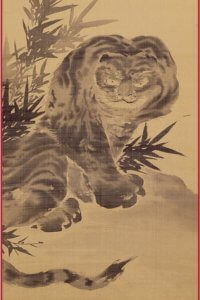
Hidden Treasure - Cave of Tigers
Cave of Tigers: The Living Zen Practice of Dharma Combat
By John Daido Loori
Grrrrrrrrr. These records of public teaching encounters between the founder of Zen Mountain Monastery and his students are disorienting (in the best way), thought-provoking, and funny, and they show that this ancient practice for manifesting wisdom is alive and well in our own time.
For more information:

John Daido Loori (1931–2009) was one of the West's leading Zen masters. He was the founder and spiritual leader of the Mountains and Rivers Order and abbot of Zen Mountain Monastery. His work has been most noted for its unique adaptation of traditional Asian Buddhism into an American context, particularly with regard to the arts, the environment, social action, and the use of modern media as a vehicle of spiritual training and social change. Loori was an award-winning photographer and videographer.

